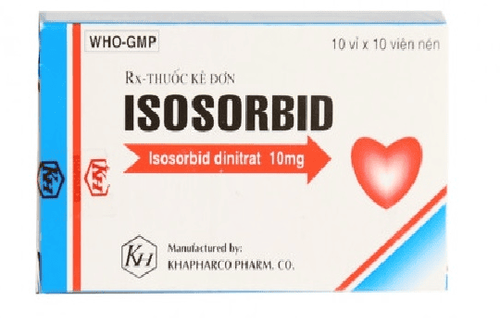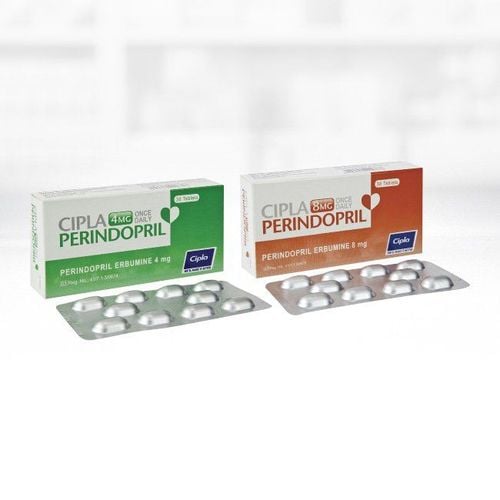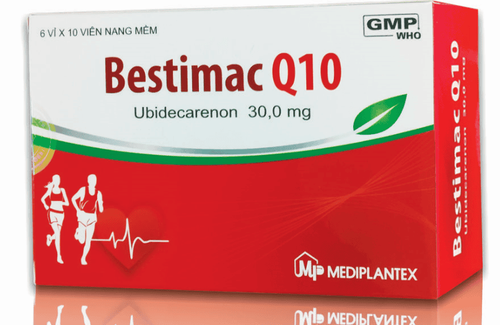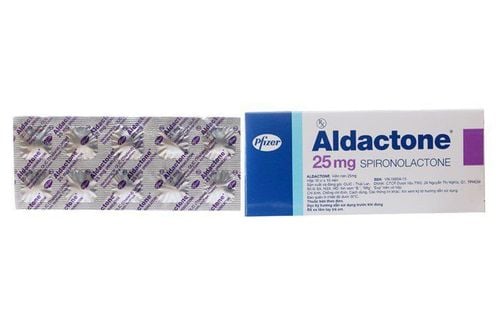This is an automatically translated article.
Enam medicine 10mg is indicated for the treatment of essential hypertension, hypertension due to kidney disease, congestive heart failure,... So how to use Enam 10mg? What precautions should be taken when using this drug? Let's find out the necessary information about the drug Enam 10mg through the article below.
1. What is Enam 10mg?
Common name: Enalapril
Brand name: Vasotec
Registration number: VN-8111-04
Dosage form: Tablets
Hungry package: Big box 5 small boxes x 2 blisters x 10 tablets
Ingredients: Enalapril
Jaw Amount: 10mg
Manufacturer: Dr. Reddys Laboratories., Ltd - INDIA
2. Uses of Enam 10mg
Indications
Degrees of essential hypertension . Hypertension due to kidney disease. Hypertension with diabetes. Levels of heart failure: improve survival, slow progression of heart failure, reduce the number of myocardial infarctions. Treatment and prevention of congestive heart failure. Prevention of ventricular dilatation after myocardial infarction. Usage - Dosage
Usage:
Enalapril can be taken before or after meals, food does not change the bioavailability of the drug. Use 1 to 2 doses per day.
Dosage:
Primary hypertension: + The starting dose is 5mg, the dose can be increased depending on the degree of hypertension, the maintenance dose is determined after 2-4 weeks of treatment.
+ Daily dose from 10-40 mg, taken once a day or divided into two times.
+ Maximum dose 40 mg/day.
Should start at a low dose because it can cause symptoms of hypotension, do not use at the same time as diuretics.
In case of renal failure: + Creatinine clearance 30-80ml/min, dose 5-10mg/day.
+ Creatinine clearance 10 - 30 ml/min, dose 2.5 - 5 mg/day.
Heart failure: often combined with digitalis and diuretics (it is recommended to reduce diuretic dose and interval before taking Enalapril). An initial dose of 2.5 mg, which can be gradually increased to a therapeutic dose, must be done under careful monitoring.
3. Side effects of Enam 10mg
Blood and lymphatic system disorders: Anemia, aplastic anemia and hemolytic anemia, neutropenia, decreased hemoglobin, decreased haematocrit, thrombocytopenia, agranulocytosis, bone marrow suppression, decreased pancytopenia, lymphoma, autoimmune disease. Nutritional and metabolic disorders: hypoglycemia. Nervous system and mental disorders: headache, depression, confusion, somnolence, insomnia, irritability, paresthesia, dizziness, abnormal dreams, sleep disturbances. Eye disorders: blurred vision. Cardiovascular disorders: dizziness, hypotension (including postural hypotension), syncope, myocardial infarction, tachycardia, cerebrovascular accident, chest tightness, arrhythmia, angina pectoris, stroke palpitations, Raynaud's phenomenon. Respiratory tract disorders: cough, dyspnea, rhinorrhea, pharyngitis, hoarseness, bronchospasm/asthma, pulmonary infiltrates, rhinitis, allergic alveolitis/eosinophilic pneumonia. Gastrointestinal disorders: nausea, diarrhea, abdominal pain, taste changes, intestinal obstruction, pancreatitis, vomiting, dyspepsia, constipation, loss of appetite, stomach irritation, dysphagia, stomach ulcers, mouth sores, aphthous ulcers, glomerulonephritis. Hepatobiliary disorders: liver failure, hepatitis, cholestasis (including jaundice). Skin and subcutaneous tissue disorders: rash, hypersensitivity, angioedema, pruritus, urticaria, alopecia, erythema multiforme, Stevens-Johnson syndrome, exfoliative eczema, toxic epidermolysis, pemphigoid erythema. A complex of symptoms has been reported: fever, serosa, vasculitis, myalgia/myalgia, arthralgia/arthritis, positive ANA, eosinophilia, leukocytosis. Liver failure, renal failure, proteinuria, oliguria. Reproductive system: impotence, gynecomastia in men. Other disorders: asthenia, fatigue, cramps, flushing, tinnitus, dizziness, fever. Laboratory abnormalities: hyperkalemia, increased plasma creatinine, uremia, hypernatremia, elevated liver enzymes and increased plasma bilirubin. The doctor must be informed of the adverse effects encountered while taking the drug.
4. Note when using Enam 10mg
Contraindications
Hypersensitivity to enalapril. Aortic stenosis and renal artery stenosis. Note
In hypertensive patients receiving enalapril, symptomatic hypotension may occur if the patient is volume-depleted. Enalapril must be used with caution in patients with occlusion of the left ventricular valve and pumping apparatus and avoided in cases of cardiogenic shock and hemodynamic obstruction. In cases of renal impairment, the initial dose must be adjusted according to the patient's creatinine clearance and then according to the patient's response to therapy. Potassium and creatinine should be regularly monitored. The risk of hypotension and renal failure is increased in patients with bilateral renal artery stenosis or narrowing of the artery to a functioning kidney. ACE inhibitors are rarely associated with a syndrome that begins with cholestasis and progresses to fulminant hepatic necrosis and death. Neutropenia/granulocytopenia, thrombocytopenia, and anemia have been reported in patients receiving ACE inhibitors. Enalapril must be used with caution in patients with collagen vascular disease, immunosuppressive therapy, treatment with allopurinol or procainamide, or a combination of these complicating factors. Angioedema of the face, lips, tongue, glottis and/or pharynx has been reported in patients treated with ACE inhibitors. Anaphylactic reactions have been reported rarely in patients receiving ACE inhibitors during snake venom desensitization. Anaphylaxis has been reported in patients on high-velocity membrane dialysis and concomitant treatment with ACE inhibitors. In diabetic patients treated with oral antidiabetic drugs or insulin, blood glucose levels should be tightly controlled during the first month of ACE inhibitor therapy. A dry cough has been reported while taking ACE inhibitors. Hypotension during surgery or anesthesia has been observed in patients receiving ACE inhibitors. Hyperkalemia has been observed in patients taking ACE inhibitors. Lithium should not be combined with enalapril. Korantrec contains lactose, so you must tell your doctor if you are intolerant to certain types of sugar. Caution
Pregnant women:
Do not take enalapril during pregnancy. Consult your doctor before taking any medication. Lactation:
Enalaril passes into breast milk, but the effect of the drug on the infant has not been determined, so it should not be used while breastfeeding. Consult your doctor before taking any medication. Effects on ability to drive and use machines
Enalapril sometimes feels dizzy and tired, so caution should also be exercised when driving and operating machines.
5. Drug interactions
Because some drugs can interact with each other, enalapril should not be used concomitantly. However, even if there is an interaction, some drugs can be combined with special caution. In this case your doctor may change the dose or take necessary measures.
If you are taking enalapril, it is important to tell your doctor or pharmacist of other medicines you may be taking, especially the following:
Diuretics, potassium supplements, other antihypertensives, lithium, tricyclic antidepressants, antipsychotics, anesthetics, narcotics, nonsteroidal anti-inflammatory drugs, sympathomimetic drugs, antidiabetic agents, acetyl salicylic acid, thrombolytics, beta-blockers and alcohol.
Please dial HOTLINE for more information or register for an appointment HERE. Download MyVinmec app to make appointments faster and to manage your bookings easily.













